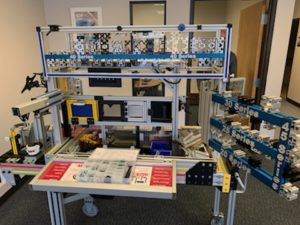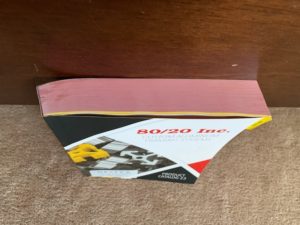I’ve had the opportunity to look at a pair of Sprinter vans the past few days. Sadly, the one I was most excited about – a 2006 T1N model (which turned out to actually be a 2005) – just wasn’t going to fly. 250,000 miles was one strike; but then I got out to see it today and the body looked kind of rough. Several patches of rust, paint cracked and peeling, other issues. It would make a great local work van for someone, but in my opinion, it would be unsuitable for vandwelling without a lot of work (and a lot of money). The price ($15k) was good if it was in better shape, but… no.
The other day I also checked out a 2012 Sprinter, 166,000 miles. It drove nice (I was merely a passenger) and the only issue I could spot, at least without getting a look underneath (and the ground was covered in snow, so didn’t try) is a bit of body damage on one of the rear doors – fairly minor. The couple who own it had plans for a conversion and life threw them a change, so they’re looking to move this van that they only picked up a few months ago. Asking $22,500 – more than I’d care to pay. They have some other interest so I expect it’ll go fairly quick; but they’re also motivated to sell, so maybe if no one else bites, they’ll come down on the price some. I’m in a good position that I can walk away from anything.

Aside from tripping to see the van today, I also made arrangements to stop by the office of a company that sells automation products and supplies. They’re one of two distributors of 80/20 that I’m aware of in the Denver area. Once I’d made arrangements to see the van, I gave them a call and made an appointment.
The fellow I spoke to on the phone kept using the term “gurney” to describe their demo setup, and that puzzled me to no end, until later in the visit, when he explained the setup. The whole assembly in the photo is built to roll into the back of a van or truck, like a gurney into an ambulance. Wheels on the left end end up on the bed surface; the legs on the left are hinged to fold up; and the legs on the right will slide upwards and out of the way.
You can see, in this demo rig, the massive amount of options one has available with 80/20. All the thinly sliced rail profile pieces on this side, in the areas with the blue trim, are metric; there’s also a bunch on the other side that are fractional (inches). In the center and the sides are various random applications of the product; doors, latches, sliding rails and the like.

One of the other things this fellow mentioned on the phone earlier in the day was that he was going to give me a catalog. Well, that’s fine, I thought; I can poke around on the 80/20 website for things easily, like I’ve done several times; but I was not prepared for the mass of this catalog. It’s gigantic, and frankly, quite intimidating! But I see the advantage of this over the website; it’s quite easy to just flip pages and see things that might catch your eye, vs paging through webpages one at a time, having to click through for more info, back, rinse, repeat.
One service this fellow offered, for free no less, is design help. Basically, if I call him up with a project with dimensions and needs, he’ll put the whole thing together in AutoCAD, complete with dimensions of all the rail lengths needed, connectors and anchors, everything, and he won’t charge me a dime. (Naturally, that’s with the understanding that I order all the gear through him; that’s assumed and entirely fair.)
Toward the end, I inquired about quantity discounts. 80/20 can get pricy. The 1″ rails are around a quarter an inch – $3 a foot. The 1.5″ rails are double that. But, apparently if you order enough at a time, discounts can be in the offing. Doubly handy is that a friend nearby is getting geared up to do his own van build, including using copious amounts of 80/20, so between us we should be able to order some decent quantities at a time and save some money!
The past few days I’ve been doing some brainstorming/sketching on a portion of my build plan, the kitchen counter area. I’d already decided that I would build the whole basic structure out of 80/20 and build it outside of the van, and leave a few extra inches on the long rail lengths – insurance against cutting those long rails down and finding I measured badly and they’re too short! With that plan, I see no particular reason why I couldn’t go ahead with building out this frame before I even have a van, as long as I keep those long rails long enough to cover any variances… so maybe I’ll put in an order in a week or two.